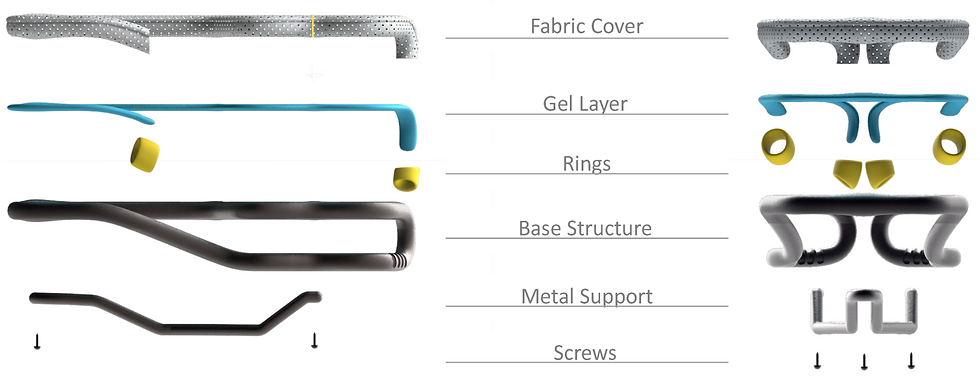JoI Bike Saddle
The JoI bike saddle is an industrial design product created to meet the growing demand for cycling in major European cities.

Background
JoI Bike Saddle was developed from the question stemmed increasing cycling population in Europe; in Milan, 40% of residents use bikes weekly, and the bike path has expanded by 80% annually since 2014.
As A Product Designer:
-
Collaborated closely with two industrial designers to conceptualize and develop a user-friendly and shareable bike product.
-
Led design workshops and brainstorming sessions to generate innovative ideas for product features and user experience.
-
Conducted user research and analyzed feedback to inform design decisions, focusing on accessibility and ease of use.
-
Integrated feedback from industrial designers to refine the bike's ergonomic features and ensure a cohesive design.
-
Managed project timelines and deliverables, coordinating tasks across team members to meet deadlines.
-
Utilized tools like Rhino and keyshot to prototype and test the product design, iterating based on usability tests.
Share riding experience was impossible in Cities
According to the survey, 50% of bikers are interested in sharing their riding experience with others. The current products available on the market are unable to meet this demand.
The current bike saddle were outdated and uncomfortable
The bike saddle's outdated and uncomfortable design was found to cause damage to the groin and potentially lead to chronic issues, according to research.
Invested in Study Cyclist sitting behaviours
Studied cyclist's behaviours and drawing inspiration from the classic shape of motorbikes, the team found that by extending the length and width of the shape, they could meet users' desire to share the ride.


After testing out the shape with various use cases, it was determined that the cross-figure eight shapes could comfortably accommodate two adults for short-distance rides.

Designed an ergonomic shape to support the cyclist’s sitting position
The current bike saddle has been found to put significant pressure on the user's pelvis bone based on user testing and studies. However, a unique shape design has been developed to alleviate this pressure and provide support to the thigh muscles.


Studied Materials to increase saddle’s comfortability
The gel in the fabric absorbs shock waves while riding the bike, and the fabric's numerous small holes allow better airflow, increasing comfort during long rides in humid and hot weather.




Reflection
-
Collaborated closely with two industrial designers to conceptualize and develop a user-friendly and shareable bike product.
-
Led design workshops and brainstorming sessions to generate innovative ideas for product features and user experience.
-
Conducted user research and analyzed feedback to inform design decisions, focusing on accessibility and ease of use.
-
Integrated feedback from industrial designers to refine the bike's ergonomic features and ensure a cohesive design.
-
Managed project timelines and deliverables, coordinating tasks across team members to meet deadlines.
-
Utilized tools like Rhino and Keyshot to prototype and test the product design, iterating based on usability tests.
Impact
-
Collaborated with industrial designers to create a bike saddle that is both user-friendly and shareable, achieving a 66% improvement in user satisfaction scores during testing phases.
-
Facilitated workshops to develop accessible and innovative product features, resulting in a refined user experience and stronger alignment with user needs.
-
Integrated user feedback to drive design improvements, resulting in a 77% increase in ergonomic comfort ratings from participants in usability studies.
-
Managed project timelines effectively, coordinating tasks to maintain momentum and achieve key milestones on schedule.
-
Prototyped and iterated the design based on usability tests, leading to a final product that meets both aesthetic and functional goals.
-
Collaborated with industrial designers to create a bike saddle that is both user-friendly and shareable, achieving a 66% improvement in user satisfaction scores during testing phases.
-
Facilitated workshops to develop accessible and innovative product features, resulting in a refined user experience and stronger alignment with user needs.
-
Integrated user feedback to drive design improvements, resulting in a 77% increase in ergonomic comfort ratings from participants in usability studies.
-
Managed project timelines effectively, coordinating tasks to maintain momentum and achieve key milestones on schedule.
-
Prototyped and iterated the design based on usability tests, leading to a final product that meets both aesthetic and functional goals.






